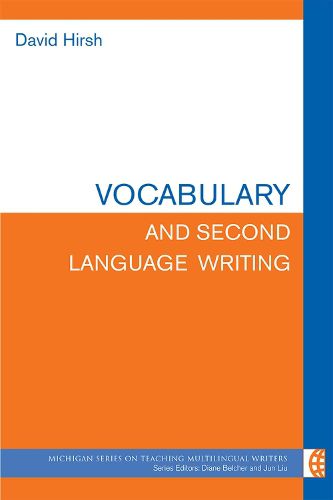Readings Newsletter
Become a Readings Member to make your shopping experience even easier.
Sign in or sign up for free!
You’re not far away from qualifying for FREE standard shipping within Australia
You’ve qualified for FREE standard shipping within Australia
The cart is loading…






In this volume, David Hirsh compellingly makes the case for why vocabulary should be a necessary component of L2 writing proficiency and L2 writing instruction. He examines why vocabulary size and context matter, how productive use of vocabulary can be scaffolded, how to treat vocabulary errors, and the ways that technology like corpora and concordances can support teachers and improve students’ independent vocabulary acquisition. In fact, one chapter is devoted to fostering learner autonomy, an important contribution to pedagogy that is often neglected in similar texts.
Each chapter concludes with a list of key points and tasks and discussion questions for pre- and in-service instructors. Several chapters also include sample activities for teaching vocabulary at various instructional levels, designed to encourage readers to consider more deeply how they will include vocabulary instruction in their classrooms. Vocabulary and Second Language Writing will be an excellent guide for all college-level writing instructors and help them understand the critical role that vocabulary plays in writing quality-something that is often disregarded in favor of holistic features like genre and rhetoric. The volume may also be useful for writing center administrators and those who train writing tutors.
$9.00 standard shipping within Australia
FREE standard shipping within Australia for orders over $100.00
Express & International shipping calculated at checkout
In this volume, David Hirsh compellingly makes the case for why vocabulary should be a necessary component of L2 writing proficiency and L2 writing instruction. He examines why vocabulary size and context matter, how productive use of vocabulary can be scaffolded, how to treat vocabulary errors, and the ways that technology like corpora and concordances can support teachers and improve students’ independent vocabulary acquisition. In fact, one chapter is devoted to fostering learner autonomy, an important contribution to pedagogy that is often neglected in similar texts.
Each chapter concludes with a list of key points and tasks and discussion questions for pre- and in-service instructors. Several chapters also include sample activities for teaching vocabulary at various instructional levels, designed to encourage readers to consider more deeply how they will include vocabulary instruction in their classrooms. Vocabulary and Second Language Writing will be an excellent guide for all college-level writing instructors and help them understand the critical role that vocabulary plays in writing quality-something that is often disregarded in favor of holistic features like genre and rhetoric. The volume may also be useful for writing center administrators and those who train writing tutors.